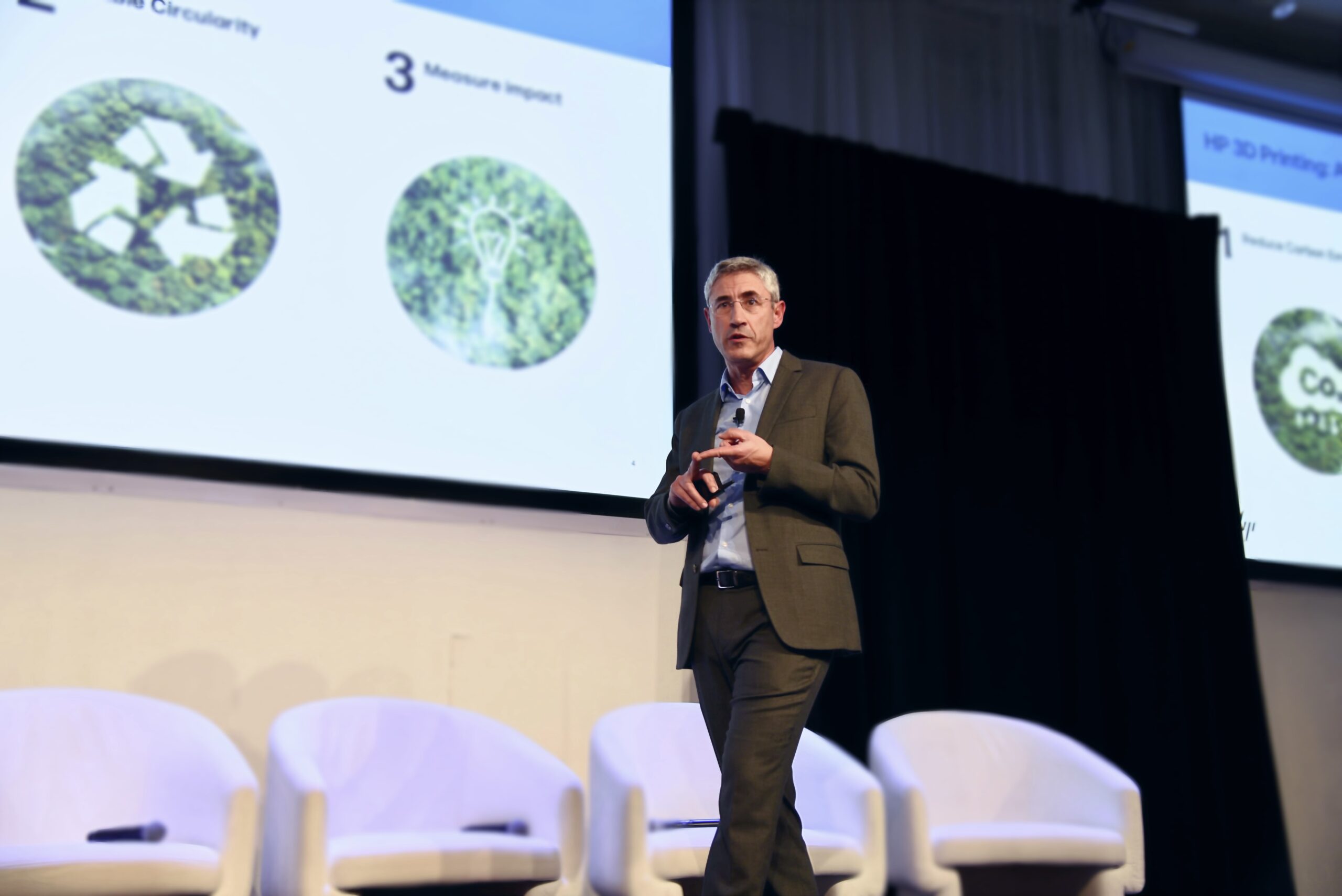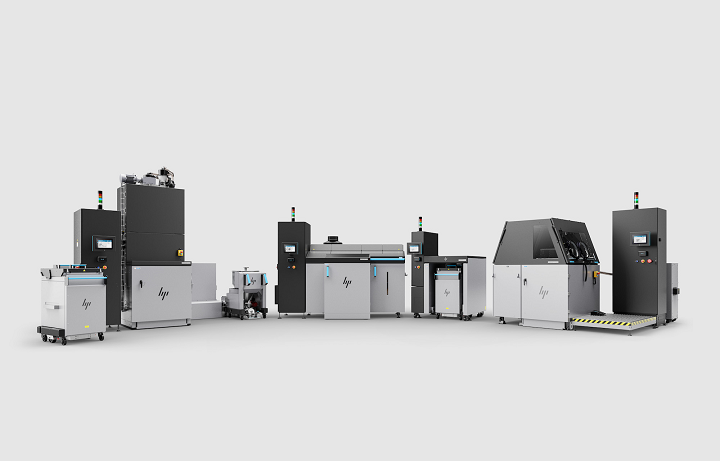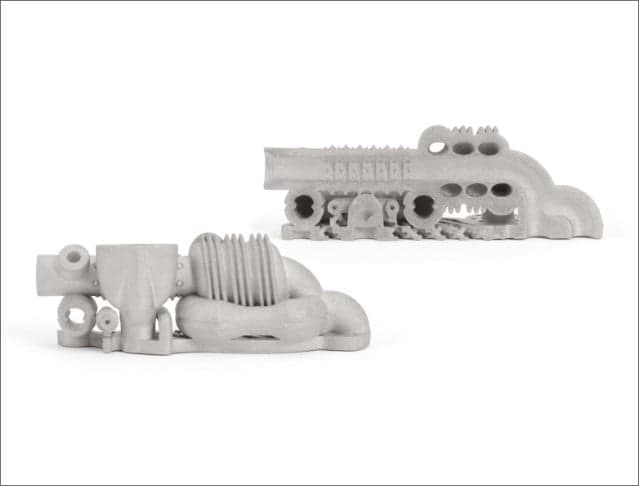Last week’s successful Additive Manufacturing Strategies (AMS) business summit was filled with illustrious speakers. Among them was the Global Head and General Manager of HP 3D Metals, the always friendly and wise Ramon Pastor, who both participated on a panel dedicated to Sinter Based AM and gave a presentation titled “Print the Change: Towards a More Efficient and Sustainable Future.” At the event, we had the opportunity to sit down and discuss the future of 3D printing, with a particular focus on developments in binder jet technology.
Pastor oversees HP’s substantial Barcelona site and its 3D metals division. Since 2015, he has been a key figure in HP’s additive manufacturing (AM) initiatives, holding leadership roles after a 15-year tenure in R&D and product management at the company. He is at the forefront of HP’s metal 3D printing efforts, including the rollout of the S100 binder jet solution.
HP made big waves upon entering the AM industry, quickly gaining a sizable market share in powder bed fusion (PBF) with its Multi Jet Fusion (MJF) polymer printers. The company now aims to lead the emerging binder jet market. The appeal of binder jet technology lies in its potential to produce inexpensive metal parts for high-volume production. This technology promises to make metal printing more accessible for manufacturing, with benefits in scale and throughput. However, challenges are numerous, including unpredictable part shrinkage, achieving accuracy on the first attempt, and managing various manufacturing processes simultaneously.
HP’s strategy for introducing this technology has been cautious. Rather than dumping an unrefined product on the market or marketing it indiscriminately, HP targeted companies capable of utilizing the technology on a large scale, educating them about the technology before implementation. This approach aims to cultivate knowledgeable users who can leverage binder jet technology to open new markets or expand 3D printing into novel applications.
Pastor shared that HP has thoroughly discussed and researched the adoption process. He and his team are focused on “scaling revenue growth rapidly,” with a keen interest in “cracking revenue growth.” The team recognizes that metal production using binder jet technology is relatively new. Currently, HP is working to open up the market by making the technology more accessible and stimulating demand. Consequently, a logical strategy is to co-develop solutions with customers.

HP’s Ramon Pastor at AMS 2024. Image courtesy of Ashley Alleyne.
To facilitate understanding of the processes, parameters, certification, and manufacturing, HP employs professional services teams to assist customers. Ramon acknowledges that adoption of binder jet technology will likely be slower than it was with MJF due to the need for process development, validation, and deployment, which could take customers up to a year and a half. However, he also notes that “repeat sales are easy,” and he envisions a pathway to producing millions of parts.
“With us, people are really committing to production with a system, not just investing in one machine, Metal printing is moving into series production, and people need time to become convinced and validate the technology,” Pastor said. “Conventional metal manufacturing has significant pain points, but we will need patience. A common goal is to achieve a more continuous flow in manufacturing to address seasonality and issues with the supply chain being unpredictable. Sustainability is also important for large corporations, as is concern about carbon footprint. Onshoring and resilient manufacturing present opportunities, as do global geopolitical tensions. This rigidity and these pain points mean that additive manufacturing is well-positioned to address these problems.”
Pastor’s central thesis, which is particularly promising, emphasizes the potential for flexibility in the manufacturing system to address issues arising from a globally fragmented and vulnerable manufacturing landscape. While the most exciting use cases are currently confidential, he hopes that he will soon be able to share more about some lighthouse implementations. At the moment, the strategy is focused on low-cost, large-scale applications, which Ramon believes will be particularly effective for binder jet technology, and specifically for HP’s solution.
“In trying to convince these big companies, we focus on the financial drivers for binder jetting,” Pastor told 3DPrint.com. “One is, of course, productivity, and another main one is material cost, which is a third to a fifth of that for laser powder bed fusion. We can use MIM-grade powders. This allows for materials at scale. In powder bed fusion, no one in materials has scale; they’re all specific to the vendors. Our MetalJet system is open; you can use the powder you want. At the moment, our go-to-market strategy is direct. We leverage our chemical knowledge and closeness to customers with a very specific sales force, knowledgeable about the market and manufacturing. If we look at the Cobra golf clubs, it’s a nice use case, not in a huge market, but a good example of leveraging geometry to gain an advantage. A better club with better control and a better center of gravity. And with a more satisfying feel and sound. Later, we could possibly customize it to the player.”
Pastor aims to apply this model to industrial manufacturing, including products like valves, filters, and any means of transportation. He is particularly keen on collaborating with those who understand that, “the part may be more expensive, but, at a system level, it will be less expensive.” This pragmatic approach is something he believes could also be viable in consumer electronics, a sector “always looking at scaling, cost, and more flowable manufacturing processes.” He identifies further potential in tooling, where adoption is rapidly increasing. Opportunities also exist in the automotive sector, as well as in healthcare and cutting guides. However, Pastor cautions that, especially in healthcare, particularly in implantology, the adoption process will be lengthy, whereas in fashion and luxury goods, the opportunities are more immediate.
Pastor attributes HP’s traction to its carbon footprint calculators and emphasis on carbon footprint reduction. Paired with systems-level thinking, this approach has led companies to recognize the benefits of adopting lighter parts. Although these parts might be more expensive initially, they could result in savings of up to 100 times the carbon footprint of the original part during use.
HP’s strategy is an impressive one, with the company situating itself on what seems to be a realistic path toward sustainably growing its metal binder jet solution. The direct engagement with key companies in promising industries could significantly benefit the firm if executed well.The honesty in acknowledging that the technology will take time to be adopted is a refreshing perspective. Adopting an integral approach with select individuals and deep engagement appears to be much more effective for all involved, rather than merely pitching products without a strategic plan and hoping for the best.
Feature image: HP’s Ramon Pastor at AMS 2024. Image courtesy of Ashley Alleyne.
Subscribe to Our Email Newsletter
Stay up-to-date on all the latest news from the 3D printing industry and receive information and offers from third party vendors.
Print Services
Upload your 3D Models and get them printed quickly and efficiently.
You May Also Like
Havaianas Collaborates with Zellerfeld to Launch 3D Printed Flip-Flops
The shoe of the summer is undoubtedly the flip-flop. Easy on, easy off, your feet won’t get sweaty because there’s not much material, and they’re available in a veritable rainbow...
UCLA Researchers Develop 3D Printed Pen that May Help Detect Parkinson’s Disease
Diagnosing Parkinson’s disease is difficult. Often, early symptoms of the progressive neurological condition may be overlooked, or mistaken for signs of aging. Early diagnosis can help save lives and improve...
Printing Money Episode 30: Q1 2025 Public 3D Printing Earnings Review with Troy Jensen, Cantor Fitzgerald
Printing Money is back with Episode 30, and it’s that quarterly time, so we are happy and thankful to welcome back Troy Jensen (Managing Director, Cantor Fitzgerald) to review the...
Heating Up: 3D Systems’ Scott Green Discusses 3D Printing’s Potential in the Data Center Industry
The relentless rise of NVIDIA, the steadily increasing pledges of major private and public investments in national infrastructure projects around the world, and the general cultural obsession with AI have...



































